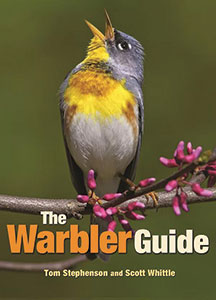Not Only the Eyes Have It: Birding By Ear
Opinion Advocates for ideas and draws conclusions based on the author/producer’s interpretation of facts and data.

By Brian Kluepfel
At our recent New York State Birders’ Conference in Tarrytown – many kudos to Saw Mill River Audubon for putting that big show together – one of the more interesting presentations came from Tom Stephenson. It was all about recognizing and memorizing birdsong.
For many of us, it can be frustrating when we hear a bird, or only catch a glimpse of movement in the shrubbery or treetop. But some see this as a challenge to an underrated birding skill: recognizing birds by song. It is a gift to some, but also a skill that can be developed with time and practice.
Many years ago, a young blind man attended a Saw Mill River Audubon meeting and we were impressed with his ability to identify birds solely by sound. But this skill, Stephenson said, can be learned and improved by some basic memory exercises.
Stephenson, an expert birder and co-author of “The Warbler Guide,” explained how through spectrographs birdsongs differ. For example, between the Philadelphia and the red-eyed vireo there are five key terms, including elements (single sounds), phrases and song structure that birders can use to pinpoint an accurate avian identification.
Examples of this included the Canada warbler, the only bird with more than a “three-section” song. He also showed how similar, yet different, are the songs of the American robin, the red-breasted grosbeak and the scarlet tanager.
Stephenson outlined memory tricks to build one’s birding arsenal. He stated that we should try to memorize songs, but no more than four to six at once.
“It’s not difficult to do if you know the right way to do it,” he said.
Using what he described as the “story method,” Stephenson explained how you could build an entire narrative around one bird’s song, eventually leading you to recognize it. Another way was the “journey method,” creating imagery and linking it with bird sounds and names.
Using everyday sounds, with audience suggestions, Stephenson went on to explain how the “squeaky wheel” sound of a black and white warbler could eventually be used to create a story about someone robbing your bicycle (with a squeaky wheel); how the “sweet-sweet” call of the yellow warbler could be associated with the saccharine taste of honey; and how the “I am lazy” call of the black-throated blue warbler could be turned into a story about a lazy man in a black ascot wearing a blue blazer. I am, no doubt, trying to explain a kind of complicated topic in just a few sentences.
Stephenson distributed a most excellent laminated flyer with QR codes for a few dozen warblers, linking to his thewarblerguide.com website, developed with co-author Scott Whittle. The site includes rotating 3-D models of each species as well as song snippets. The associated app costs $12.95.
In the end, the respected author, who’s been writing and lecturing on the topic since at least 2013, said that just two five- to 10-minute sound-based sessions per day would definitely improve our birding acuity.
And for those of us who struggle with putting the “h.o.” (heard only) category on our e-bird lists, this was certainly a bit of good news and welcome advice.
Brian Kluepfel is a writer for the Lonely Planet travel series, BirdWatching magazine and a number of other publications. You can find him online at birdmanwalking.com and drinking beer and playing guitar locally at Lucy’s Garage in Pleasantville.

Examiner Media – Keeping you informed with professionally-reported local news, features, and sports coverage.
